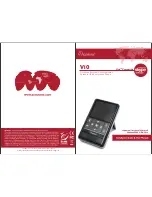
5 The protection window is defective. This can be either a manufacturing failure or caused by the user. The
window should be changed.
6 The camera lens is misfocused because of a manufacturing error.
A quantitative analysis of sharpness is very difficult to conduct in any other environment than optics
laboratory. Therefore, subjective analysis should be used.
If no visible defects (items 1-4) are found, a couple of test images should be taken. Generally, a well-
illuminated typical indoor scene can be used as a target. The main considerations are:
• The protection window has to be clean.
• The amount of light (300 – 600 lux (bright office lighting)) is sufficient.
• The scene should contain, for example, small objects for checking sharpness. Their distance should be 1
– 2 meters.
• If possible, compare the image to another image of the same scene, taken with a different device. Note
that the reference device has to be a similar Nokia phone.
Steps
1. Take several images of small objects in the distance of 1-2 metres.
2. Analyse the images on a PC screen at 100% scaling with the reference images.
Pay attention to the computer display settings: at least 65000 colors (16-bit) have to be used. True colour
(24-bit, 16 million colours) or 32-bit (full colour) setting is recommended.
Next actions
If there appears to be a clearly noticeable difference between the reference image and the test images, the
module might have a misfocused lens -> change the module.
Re-check the resolution after changing the camera module.
If the changed module produces the same result, the fault is probably in the camera window. Check the
window by looking carefully through it when replacing the module.
Dirty camera lens protection window
The following series of images demonstrates the effects of fingerprints on the camera protection window.
It should be noted that the effects of any dirt in images can vary much. It may be difficult to judge whether
the window has been dirty or if something else is wrong. Therefore, the cleanness of the protection window
should always be checked and the window should be wiped clean with a suitable cloth.
Figure 76 Image taken with clean protection window
Figure 77 Image taken with greasy protection window
Image bit errors
Bit errors are image defects caused by data transmission errors between the camera module and the phone
baseband and/or errors inside the module.
RM-180
Nokia Customer Care
Camera Module Troubleshooting
Page 8 –12
COMPANY CONFIDENTIAL
Issue 1
Copyright © 2006 Nokia. All rights reserved.
















































